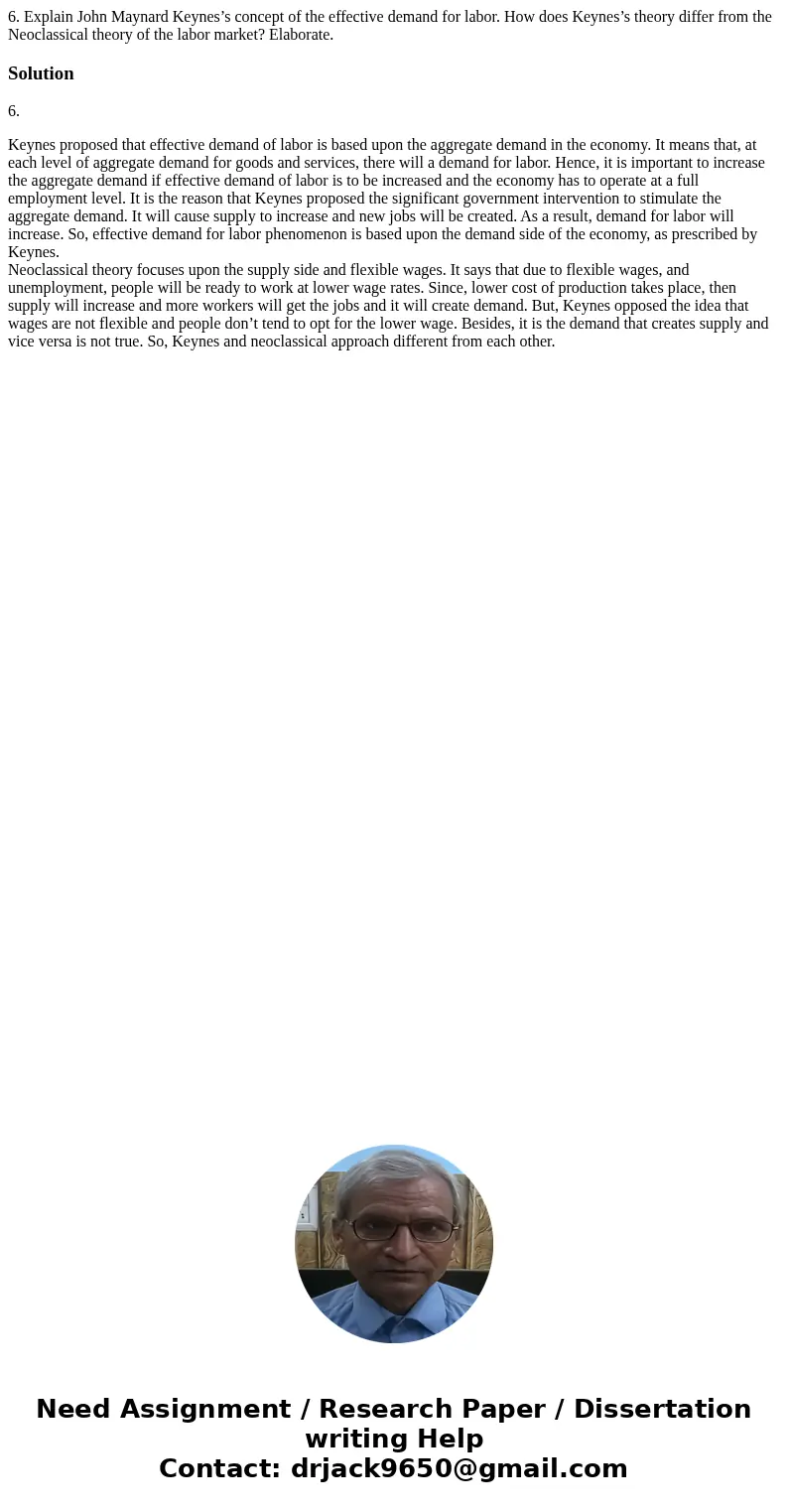6 Explain John Maynard Keyness concept of the effective dema
6. Explain John Maynard Keynes’s concept of the effective demand for labor. How does Keynes’s theory differ from the Neoclassical theory of the labor market? Elaborate.
Solution
6.
Keynes proposed that effective demand of labor is based upon the aggregate demand in the economy. It means that, at each level of aggregate demand for goods and services, there will a demand for labor. Hence, it is important to increase the aggregate demand if effective demand of labor is to be increased and the economy has to operate at a full employment level. It is the reason that Keynes proposed the significant government intervention to stimulate the aggregate demand. It will cause supply to increase and new jobs will be created. As a result, demand for labor will increase. So, effective demand for labor phenomenon is based upon the demand side of the economy, as prescribed by Keynes.
Neoclassical theory focuses upon the supply side and flexible wages. It says that due to flexible wages, and unemployment, people will be ready to work at lower wage rates. Since, lower cost of production takes place, then supply will increase and more workers will get the jobs and it will create demand. But, Keynes opposed the idea that wages are not flexible and people don’t tend to opt for the lower wage. Besides, it is the demand that creates supply and vice versa is not true. So, Keynes and neoclassical approach different from each other.

 Homework Sourse
Homework Sourse